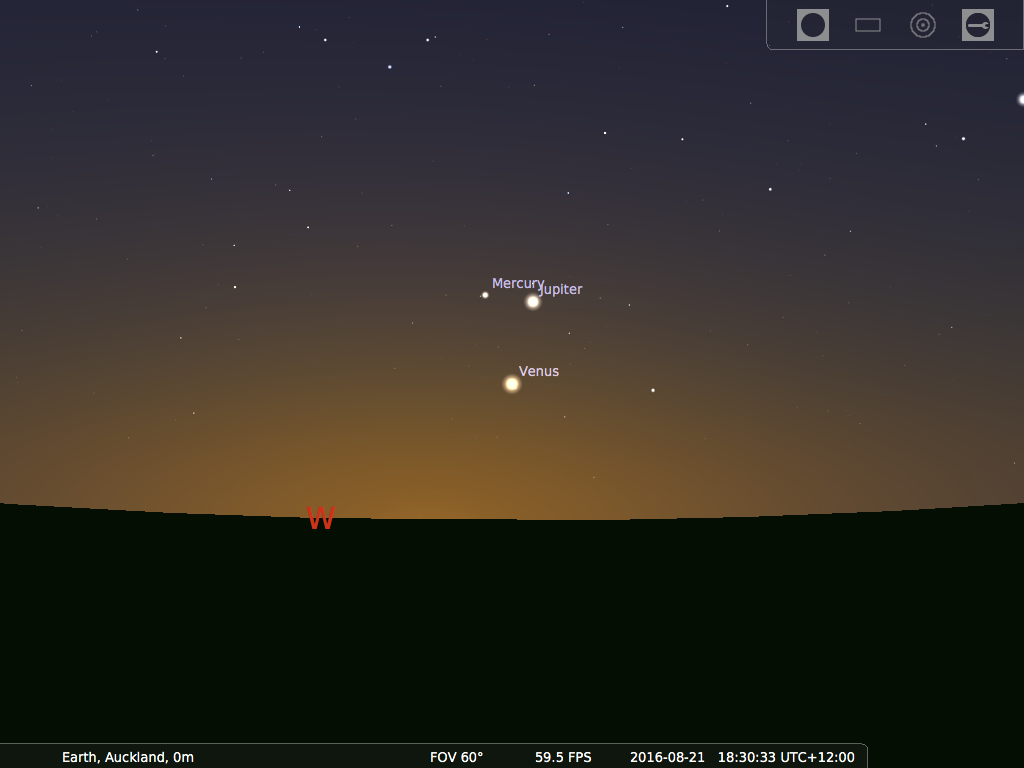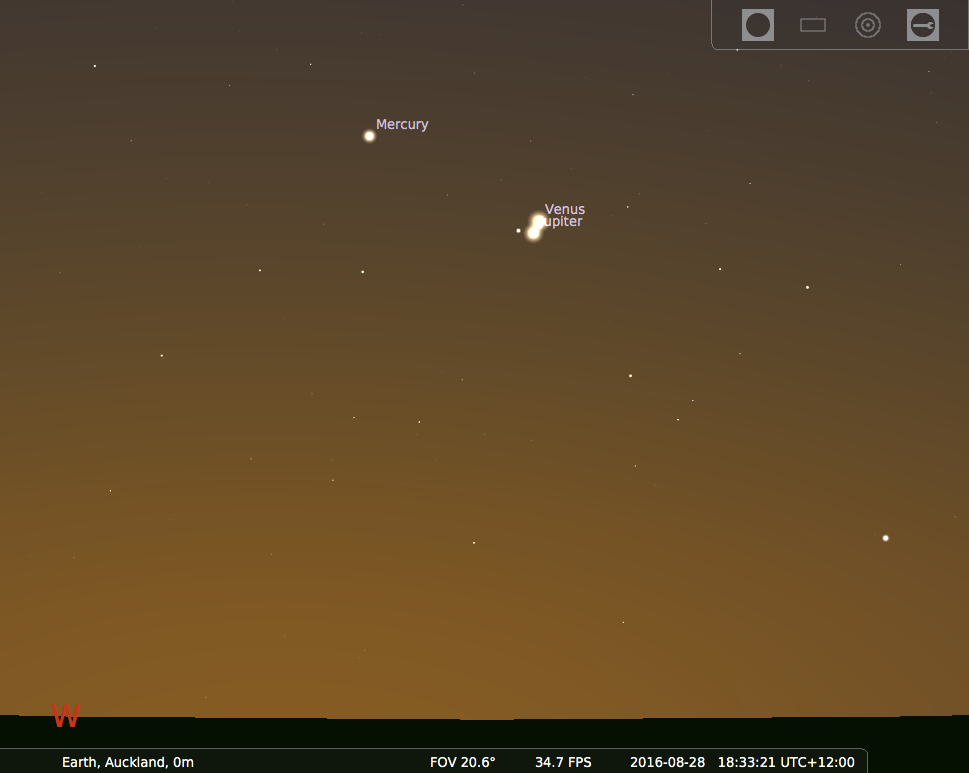Last Friday, work kept me late at the office. It was a clear and cloudless night and the stars were out as I biked home in the dusk. And as my pedals turned, the night sky wheeled more slowly above me.
My route starts with a mild climb along a ridge and turns westward. And as I headed for home I saw a light in the sky so bright I briefly wondered if it was an approaching plane. But it was the planet Venus, the evening star, following the setting sun through the Western sky. And a little way above Venus was another stunning light, the planet Jupiter.
But there was a third, somewhat fainter, point of light alongside Jupiter and Venus, the planet Mercury. These three worlds are currently clustered in a patch of sky not much bigger than your outstretched hand. As the two brightest lights in the night sky, Venus and Jupiter are usually the first objects people will point to and ask "Is that one a planet?" On the other hand, Mercury is usually the hardest naked-eye planet to find in the sky – so, with Jupiter and Venus to guide you, right now is a great time to spot our Solar System's innermost world.
You'll need a cloud-free night, an unobstructed view of the western horizon (Southern Hemisphere viewers have an advantage over their northern counterparts). The sky-maps below will get you oriented.



During the coming week, as Venus moves in its orbit, there will be a spectacular conjunction: it will brush past Jupiter in the sky, coming closest on the evening of the 28th of August (Auckland time). In reality the two planets are 700 million kilometres apart as Jupiter orbits the sun at a much greater distance than both Venus and the Earth, but it will be their closest conjunction in 50 years.
Studying the complex dance of the planets in the sky set our predecessors on the path that eventually led (via Newton, Einstein and several centuries of science) to modern cosmology. And that brings me full circle – because if I hadn't stayed late at the office tinkering with a cosmology calculation, I would have missed a treat as old as humanity.
CODA: The images shown above were made with Stellarium, a free software tool for visualising the sky which works with Windows, Mac and Linux machines while the Star Walk app is a great tool to discover the night sky – seeing it in action convinced me I needed an iPhone. Also, Mars and Saturn are also visible in the night sky right now, lying relatively close to one another and well above the horizon.
The title image shows Mercury, imaged by the Messenger spacecraft.
